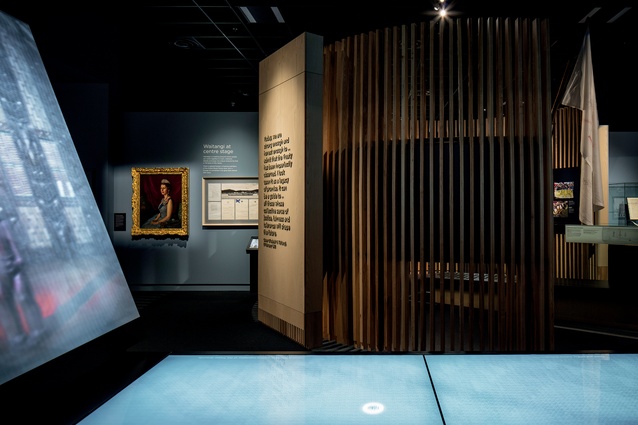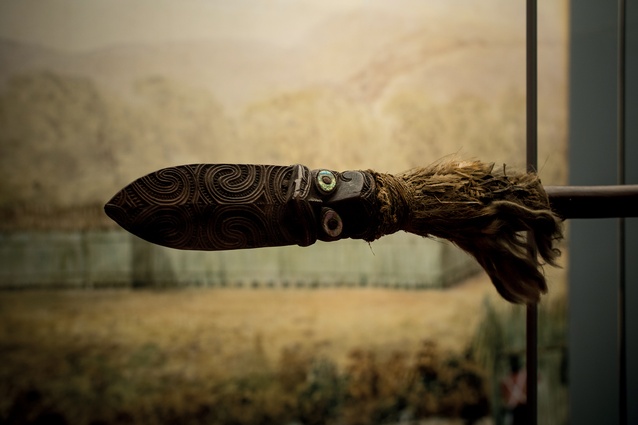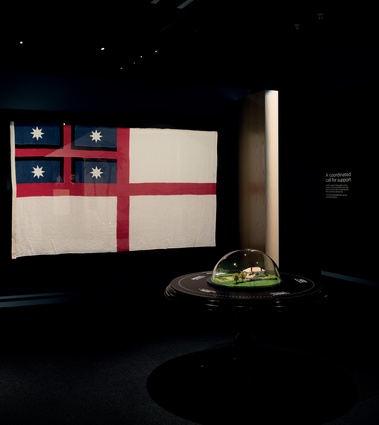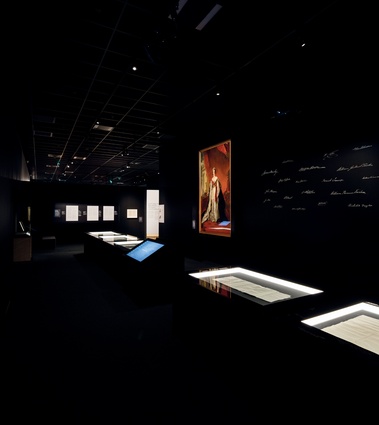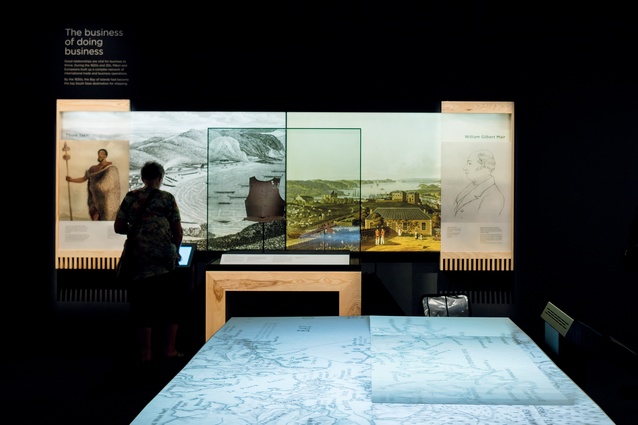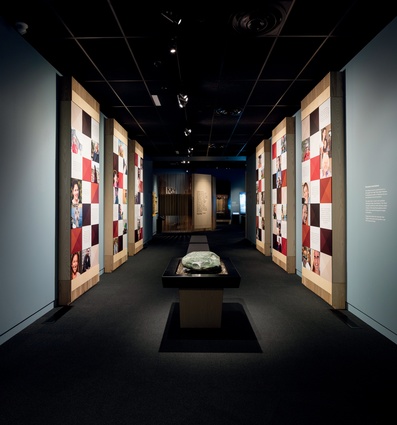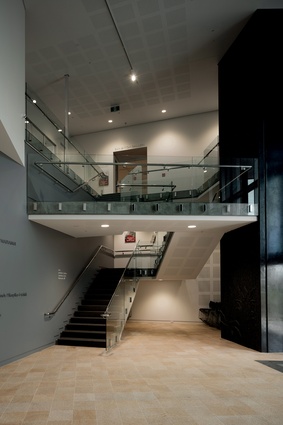Open conversation: Waitangi Museum
The Museum of Waitangi – Te Kōngahu takes an undeniably complex subject – the signing of the Treaty – and distils it into an eloquent architectural and spatial dialogue.
To begin with, there is a fascinating conversation between the concrete and glass structure (by project lead Grant Harris from Harris Butt Architects) and the Māori symbolism injected into it (by artist Carin Wilson). The exhibition within this building is an impressive feat orchestrated by Workshop e and further explores this conversation between the histories of two peoples.
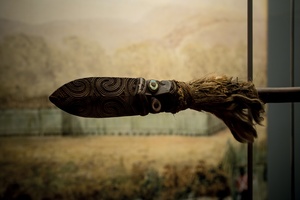
Interior attended the – very rainy – opening day and the imposing Museum was glistening. Its façade is made of textured, exposed aggregate, black concrete with a polished band, and decorated with reliefs of flora and ancestral kaitiaki by Wilson. Under the rain, the building shimmered much like the black volcanic sands of many a local beach.
“What I had in the back of my mind was the idea of the jewel box,” says Harris, “but if you take that same idea and apply it to Māori, then you end up with a thing called a waka huia, which is their container for precious articles.”
This bicultural intent is replicated throughout the building. Most striking is in the internal courtyard, or ātea, and at the main entrance, where seven columns allude to Greek or Roman constructions and have been adorned by Wilson with seven sculptural symbols, “each representing specific Māori principles that the signatory chiefs were careful to incorporate into the text of the Treaty.”
Likewise, those columns rest on small boulders that, according to Wilson, “reference a very important Māori custom of first creating a secure foundation for a building. A stone is always laid at the base of any key structural foundation.”

Harris says: “What I am trying to do is not favour any one culture, but say this is a building of this place that is linking Māori and European.”
Once you cross the threshold into the lower ground’s main gallery, the architecture seems to disappear, leaving a black box instead. The moods of the six key exhibition areas were designed to represent the varying moods of the Waitangi story. Materials include ash timbers in either their natural or darkly stained versions; red paint appears on backdrops in the area where particularly bloody battles are being explored.
There are three areas where curved walls (made of thin fin-detailing) encircle the guests, creating a sense of warmth; a connection between them and the objects being exhibited. As expected for a black-box interior, the modulation of light is crucial.
The exhibition was designed to inhabit the museum for a minimum of 10 years and, therefore, the materials are durable (mainly timbers rather than MDF). Particularly noteworthy are the two types of cases designed by Workshop e, which, for ease of access and safety, use four hydraulics to raise their lids.

“The whole system works in such a way that you can put on top a large five-sided glass dome, which is incredibly heavy… yet a single person can lift it at the push of a button,” says Az James, creative director for Workshop e, pointing out the value of such innovative technology to smaller, understaffed regional museums around the country.
James credits a research trip to the United States as an eureka moment for much of the technology used at the museum.
The Museum of Waitangi – Te Kōngahu is a carefully developed jewel box where each part of its whole aims to push forward the idea of bicultural dialogue. According to James: “It has been one of those projects… an extraordinary space; we have been honoured to be here.”
For an interview with Grant Harris of Harris Butt Architecture, see here.



